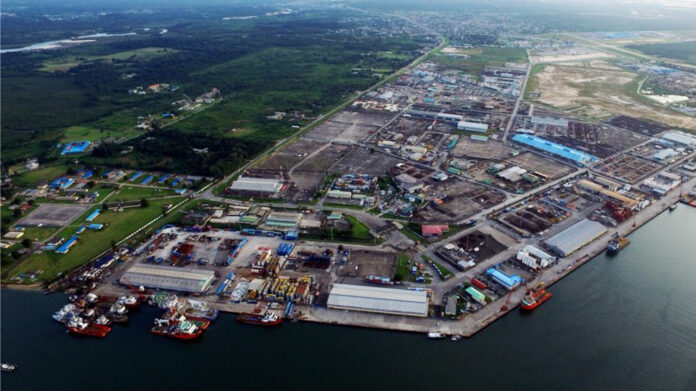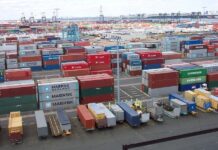Onne terminal receives 6,600 containers vessel
Chigozie Amadi
Onne Multipurpose Terminal at Onne Port Complex has disclosed that it hosted the largest container ship ever to carry out full operations at an eastern port.
In a statement on Sunday, the terminal operator said that the container ship, named Kota Cempaka, which is owned by Pacific International Lines, is 300 meters long, and could carry 6,600 twenty-equivalent units of containers.
According to the terminal operator, on the large container ship’s maiden call at the Onne Port in April 2024, it loaded and discharged over 2,000 containers full of Nigerian imports and exports.
Speaking during the reception of the vessel at Onne Port, the Chief Operations Officer of Onne Multipurpose Terminal, James Stewart, said the successful berthing and operation of the vessels mark a major milestone for the terminal and for the Nigerian Ports Authority.
“We are proud that PIL trusts OMT with handling its large vessels in Onne. The arrival of such large vessels is part of a global trend where shipping lines are upscaling vessel sizes to achieve economies of scale and reduce transport costs for Nigerian importers and exporters,” Stewart said.
Earlier, the Managing Director of OMT, Jacob Gulmann, said, “OMT is partnering with the NPA to ensure that we are ready for these larger vessels. For example, NPA is working tirelessly to ensure the water depth is 12 metres in the port. This is crucial to allowing this new generation of vessels to call Onne Port,”
He appreciated the Managing Director of the NPA, Mr Mohammed Koko-Bello, and Onne Port Manager, Mr Raymond Adigun, for their foresight and long-term vision.
He stated that the terminal was proud of the milestone adding that it was a testament to the company’s contribution to Nigeria’s logistics sector.
Situated at Onne Port Complex in River State, OMT started operations in 2021 as a container terminal operator, operating with 750 metres of deep-water berths, 12-meter water depth, two mobile harbor cranes, 15 terminal trucks, seven reach stackers, three empty handlers and 125 reefer plugs.
The terminal is powered by an in-house power station and run by the latest IT systems from Navis Terminal Operating System and SAP, making it possible for it to handle all types of cargo.





















